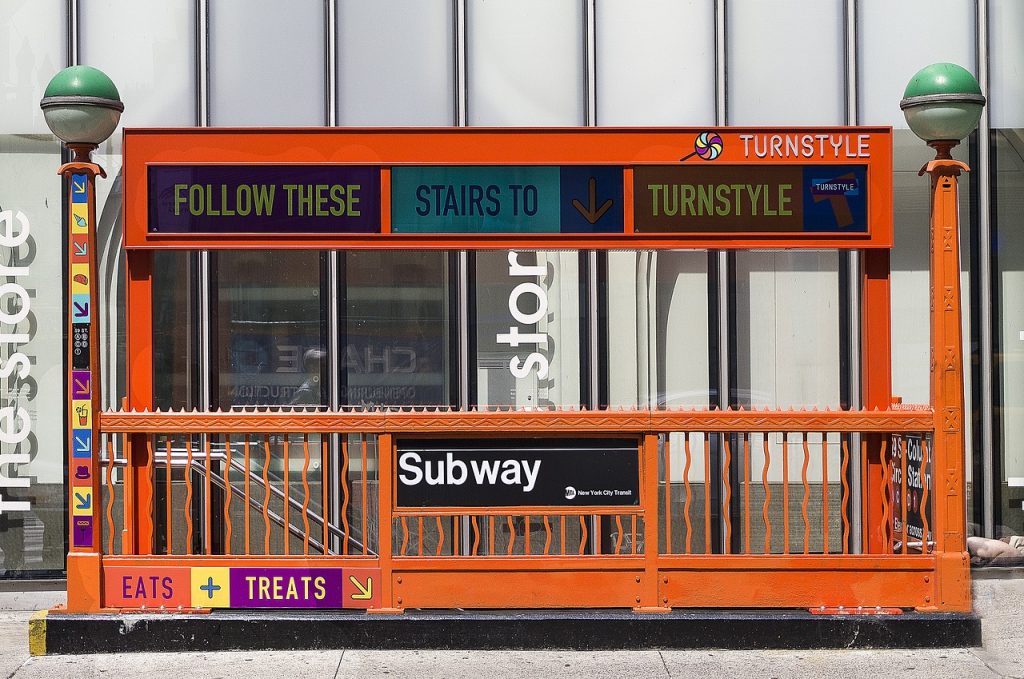
When asked where we live, most often we don’t respond with a street address but a city or neighborhood. For residents of New York City the neighborhood in which they live can define their home and identifies most closely where it is that they truly live. From Chelsea to Soho, and from Hell’s Kitchen to the Upper East Side, New York’s neighborhoods provide a vast diversity of attractions and experiences. While relatively small, getting from place to place in NYC can be challenging. Most locals get from neighborhood to neighborhood on the subway system.
In New York City, one of the primary modes of transportation is the subway system. The system officially opened in 1904, making it one of the world’s oldest systems of public transport. The New York City subway also has the distinction of being the metro system with the most stations, as well as one of the most used systems, running 24 hours a day year round. While the New York City subway system officially opened in 1904, its history dates back to the late 1800s when planning and construction began.
History of the NYC Subway System
The first demonstration for an underground transit system in the city was built and demonstrated by Alfred Ely Beach in 1869. In 1870, the Beach Pneumatic Transit opened but only extended just over 300 feet under Manhattan. For financial and political reasons, the pneumatic tube transit system was never extended and in 1912, during further construction of the subway system, workers found the old Beach tunnel. In 1888, a huge blizzard helped raise awareness of the benefits of creating an underground system of transportation. This led to a plan for construction of the subway which was approved in 1894 with work beginning in 1900.
The first subway line opened to passengers on October 27, 1904 and on its first day of operations, the system carried more than 150,000 passengers. At the time that the subway first opened, the lines were owned by two private systems including the Brooklyn Rapid Transit Company and the Interborough Rapid Transit Company. While the city built the majority of the subway lines, they were leased to the private companies. It wasn’t until 1940 that the city purchased the two privately owned transit companies and proceeded to build connections between the lines.
In 1953, The New York City Transit Authority (NYCTA) was created with the purpose of take over all transit operations in the city which by 1968 were placed under the control of the Metropolitan Transportation Authority. During the 1970s and 1980s subways ridership had declined to levels not seen since the 1910s. Crime and graffiti had become rampant and the subway system was maintained poorly with track problems and delays being common. The NYCTA worked during this time to open new stations, clean up graffiti, and install new subway cars. By the 1990s, subways service had greatly improved. Cleanup and improvements to the subway system continued into the 21st century.
NYC Subway System Construction
When subway construction first began, the method used was referred to as cut and cover. This meant that streets were torn up to dig the tunnel for the subway before being rebuilt from above. This caused traffic interruptions which led to the creation of temporary wooden and steel bridges meant to carry traffic over the construction areas. There were many obstacles faced by contractors with the cut and cover method of construction. Ground water, and rock formations were problems and gas, water, and sewer lines had to be rerouted. Digging so close to tall buildings also caused issues, with many needing underpinning to increase stability. More recently, subway lines have been created using tunnel boring machines which mean increased costs but minimal street level disruption.
Subway Stations
There are nearly 500 stations in the New York City subway system, most of which are in service 24 hours a day. Typically, underground stations are accessed by ascending staircases that are accessed from street level. The staircases are generally painted green. Some stations have different entrances that reflect their date of construction or location.
Subway Safety
Train accidents, crime, threats of terrorism, and suicides all impact the New York City subway system. Currently, the system uses automatic block signaling and automatic stops to provide safe train operation and prevent accidents. The MTA is constantly looking into ways to increase subway passenger safety. Subway system crime rates have varied over time but have continually been decreasing since the 1990s.
More NYC Subway System Information
- New York City Subway Opens
- 12 Secrets of the New York Subway
- History of the Independent Subway
- NYC Subway Construction Then and Now
- New York City Transit History and Chronology
- The New York Subway Diagram
- New York City Transit Scenes Past and Present
- New York City Subway Timeline
- Building the New York Subway
- History of Public Transportation in New York City
- History of the MTA: Learn About the City’s Transit System
- Safety Tips for Riding the Subway


Are You Familiar With This Topic? Share Your Experience.